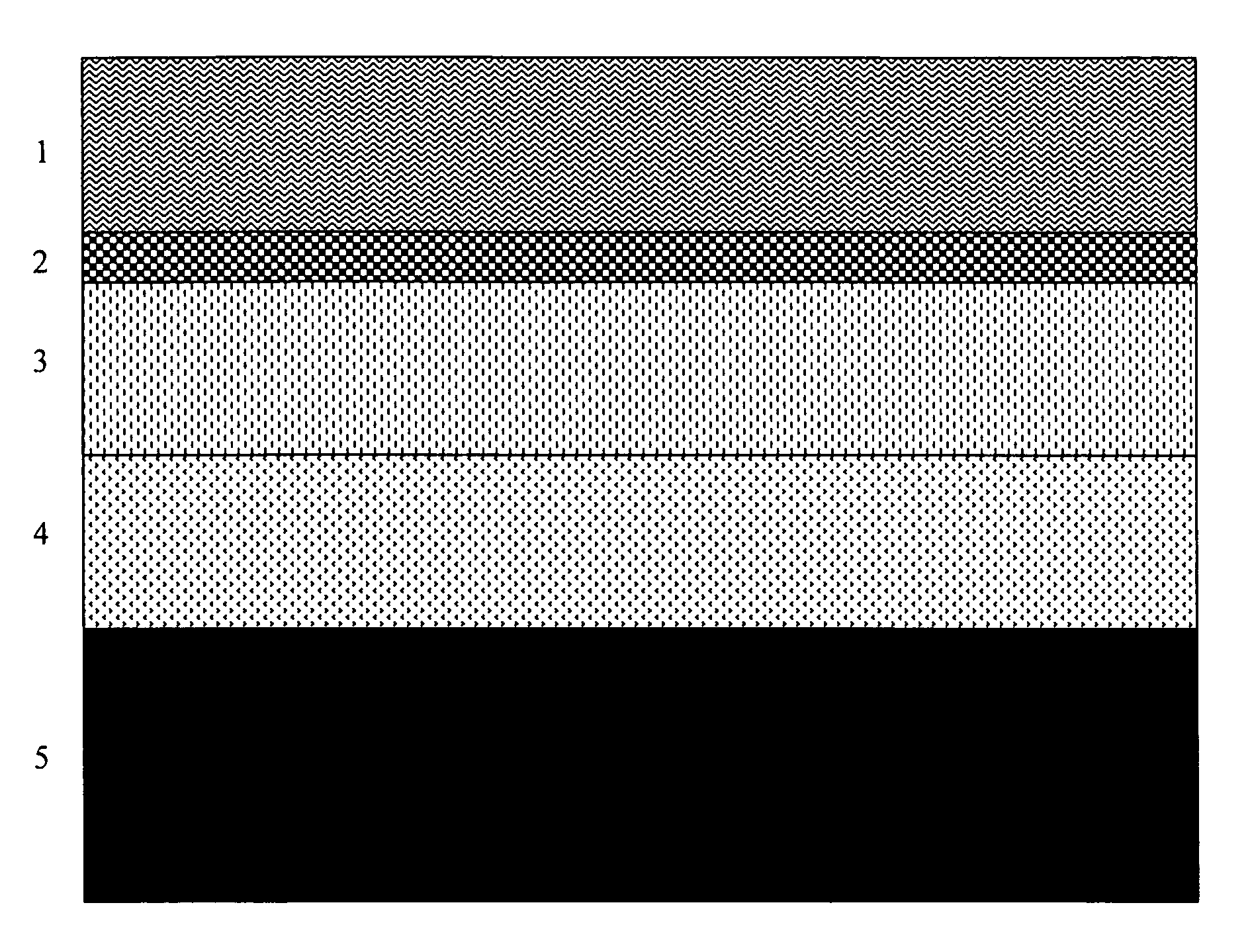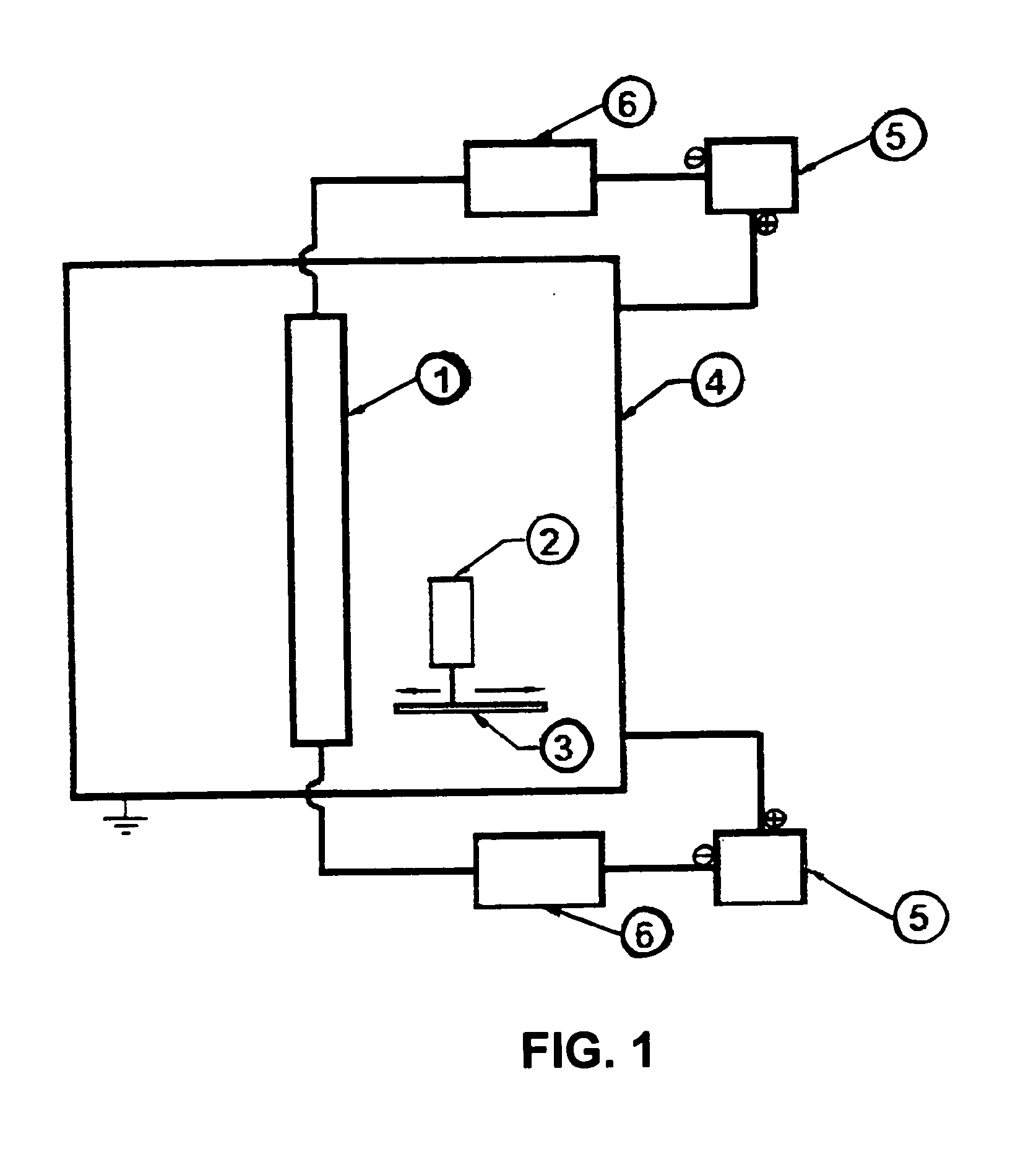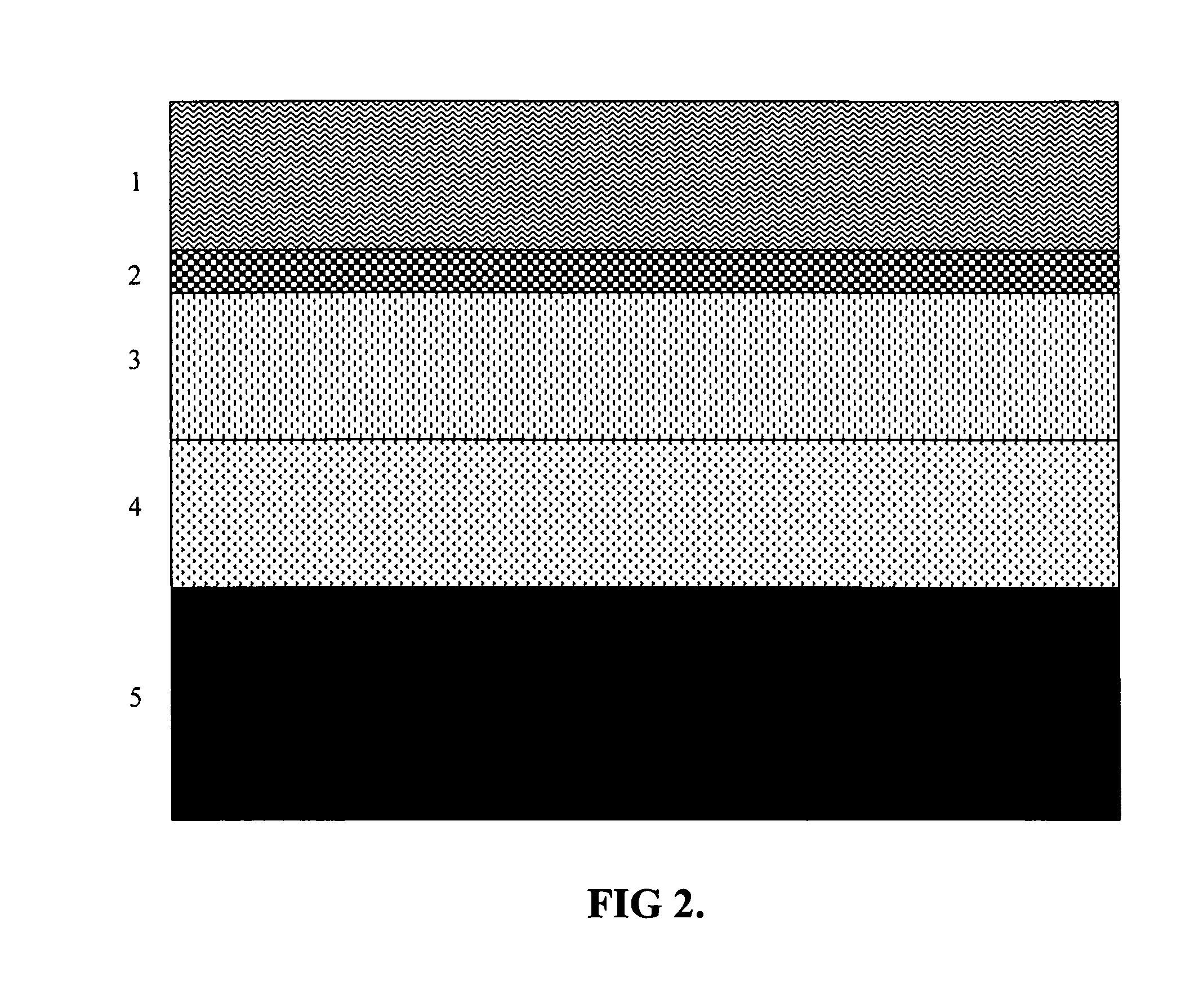Chrome coated surfaces and deposition methods therefor
a technology of chrome coating and deposition method, which is applied in the direction of film/foil adhesive, record information storage, instruments, etc., can solve the problems of high failure rate of electroplating process, high cost of coating production, and high failure rate of current electroplating method, etc., and achieves more expensive and time-consuming metal deposition method
- Summary
- Abstract
- Description
- Claims
- Application Information
AI Technical Summary
Benefits of technology
Problems solved by technology
Method used
Image
Examples
example 1
Ion Plasma Deposition of a Metal
[0067]Ionic Plasma Deposition (IPD) utilizes a modified controlled vacuum arc discharge on a target material to create highly energized plasma. IPD differs from normal ion plasma depositions in several ways, including control of substrate distance from the target and precise control of arc speed. Arc control allows for faster movement, creating fewer macro particles without the use of sensors or filters. Slower movement deposits more macro particles leading to a rougher surface. Adjusting substrate distance from the target during deposition also controls density and size of the macro particles deposited.
[0068]A typical apparatus for using the modified IPD method is shown in FIG. 1. Deposition conditions are adjusted to the size and type of substrate, the target material, which for the examples shown is chrome or a chrome alloy. The substrate, which can be aluminum or steel as illustrated in the examples, is placed at a distance from the target so that...
example 2
Chrome Coated ABS Plastic
[0069]A solution of an ultraviolet curable polymer was flooded over the surface of an ABS plastic part at a thickness of ten microns and pre-cured for 120 sec. with radiant heat at 100° C. The part was then placed under a UVB light for eight min until fully cured. 99.99% chrome was deposited by the IPD method with IPD control at 300 Hz in accordance with the method of example 1 to a depth of 500 nm. An epoxyacrylate polymer was then coated to a thickness of 2 microns followed by curing for 120 sec. at a temperature of 100° C.
[0070]The quality of the coating met or exceeded the following standards: AST B-117 (salt spray); ASTM D-3359 (adhesion by reverse saw cut); ASTM D-3363 (hardness using gravelomener); and GM 264M (thermal cycling −30° C. to +85° C.)
example 3
Chrome Coated Hardened Steel or Aluminum
[0071]A hardened steel automotive wheel with major surface roughness was cleaned with phosphate solution followed by electrodeposition of an organic polymer to a thickness of 5 microns. A solution of an ultraviolet curable organic polymer was deposited by flood coat at a thickness of 10 microns and pre-cured for 120 sec with radiant heat at 100° C. The part was then placed under a UVB light for eight minutes until fully cured. A 99.995% chrome coating was deposited by the IPD method of example 1 controlled at 300 Hz to a thickness of 500 microns. A solution of an ultraviolet curable organic polymer coating was deposited by flood coating to a thickness of 2 microns and pre-cured with radiant heat for 120 sec at 100° C. The part was then placed under a UVB light for eight min until fully cured.
[0072]The analogous procedure was used to coat an aluminum substrate.
[0073]The quality of the coating on either the hardened steel or aluminum met or exce...
PUM
| Property | Measurement | Unit |
|---|---|---|
| thick | aaaaa | aaaaa |
| thick | aaaaa | aaaaa |
| thick | aaaaa | aaaaa |
Abstract
Description
Claims
Application Information
 Login to View More
Login to View More - R&D
- Intellectual Property
- Life Sciences
- Materials
- Tech Scout
- Unparalleled Data Quality
- Higher Quality Content
- 60% Fewer Hallucinations
Browse by: Latest US Patents, China's latest patents, Technical Efficacy Thesaurus, Application Domain, Technology Topic, Popular Technical Reports.
© 2025 PatSnap. All rights reserved.Legal|Privacy policy|Modern Slavery Act Transparency Statement|Sitemap|About US| Contact US: help@patsnap.com



